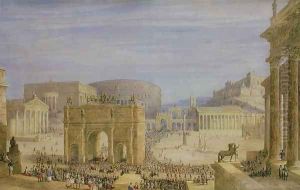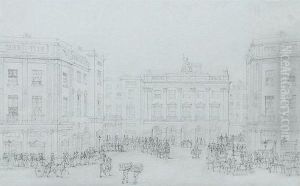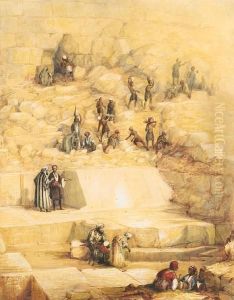Francis Vyvyan Jago Arundale Paintings
Francis Vyvyan Jago Arundale was a relatively obscure figure in the world of 19th-century art, not widely known outside of specialist circles. Born in 1807 in Cornwall, England, he grew up in a period marked by the Romantic movement, which would have influenced his artistic sensibilities. However, he is not primarily remembered for his art, but for his involvement with other aspects of cultural and architectural history.
Arundale's interests were diverse. He is often remembered for his role as an architectural draughtsman and for his association with the Gothic Revival movement in Britain, a trend in architectural design that sought to revive medieval Gothic architectural forms. His work would have involved detailed drawings and plans that reflected the intricate designs characteristic of this style.
Despite his contributions to the field of architecture, Arundale did not gain the level of fame achieved by some of his contemporaries, such as Augustus Pugin or John Ruskin, who were leading figures in promoting the Gothic Revival. His life was relatively short, as he died in 1853 at the age of 46. The lack of extensive documentation or a significant body of work may have contributed to the limited recognition of his contributions in the years following his death.
The information on Arundale is quite sparse, and as such, the details of his biography are not as well-documented as those of many of his contemporaries. This lack of extensive archival material has resulted in Arundale being a lesser-known figure in the history of 19th-century art and architecture. Nevertheless, for those who study the Gothic Revival and the architectural trends of the period, his work remains a point of interest, contributing to the understanding of the era's artistic and cultural developments. His legacy, while not as prominent as that of some of his peers, is preserved in the specific architectural drawings and plans he left behind, which continue to be of interest to historians and enthusiasts of the period.



